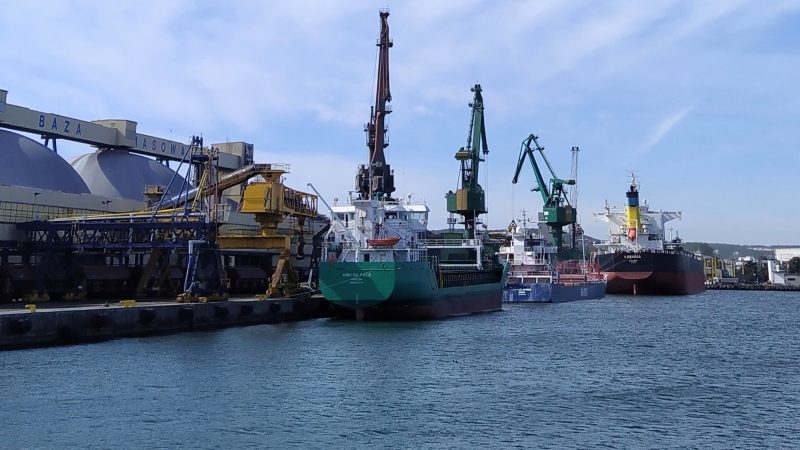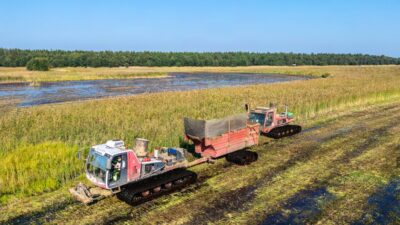Fertilizer Shipping Project
The first phase of the Fertilizer Shipping project surveyed the best techniques and practices to load fertilizers at harbour and to clean cargo holds, and investigate the true extent of the problem. The next phase promoted measures that reduce discharges throughout the Baltic Sea area, working together with stakeholders such as harbours, harbour operators, shipping companies and fertilizer manufacturers.

More information:

A new, possibly very significant source of nutrient discharges has been identified in Baltic Sea protection: the marine transportation of fertilizers. The risk of nutrient discharges is linked to the loading and unloading of fertilizers at harbour and cleaning the holds of ships that carry fertilizers in the open sea.
Each year, over 44 million tonnes of fertilizers are shipped through the ports of the Baltic Sea and the amount is even increasing. Problems related to fertilizer loading include dusting fertilizer particles, fertilizer ending up in the sea either during the loading phase or with the harbour’s stormwaters, and other practices where dust particles from fertilizers are spread to the environment. Ships usually wash their load in the open sea after a fertilizer shipment. The fertilizer cargo residues left in the hold can end up straight in the sea with wash water.


Opportunity to reduce nutrients significantly
In the early stages of the fertilizer shipping project, the risks related to fertilizer transportation emissions, the scale of these risks, and methods for reducing emissions were investigated.
Fertilizer ports were identified as significant point sources of nutrient pollution. The study conducted in the project revealed that significant amounts of phosphorus and nitrogen, reaching several hundred kilograms of phosphorus and hundreds of tonnes of nitrogen, can be transported into the sea annually from busy fertilizer ports, primarily through stormwater runoff from the loading docks. This load corresponds to the nutrient load typically produced by the wastewater treatment plants of a large city.

Emission reduction measures in fertilizer ports around the Baltic Sea
The good news is that fertilizer emissions can be effectively prevented using simple and cost-effective methods. As a result of work started in 2019, various strategies were identified to reduce fertilizer emissions and nutrient load in collaboration with industry stakeholders, such as ports, shipping companies, port operators, the fertilizer industry, and authorities. The success of the project depended on extensive cooperation both in Finland and internationally.
The project identified the need for an international common guideline to reduce fertilizer emissions. This led to the creation of the BET/BEP guidelines, which include 67 measures based on the Best Available Techniques (BAT) and Best Environmental Practices (BEP) for reducing fertilizer waste during storage, handling, and transportation. The guidelines provide ports, operators, shipping companies, and other stakeholders involved in fertilizer shipping, as well as authorities and policymakers, with concrete tools to prevent fertilizer emissions.
The project disseminated the best practices and technologies for reducing nutrient emissions to Finnish fertilizer ports through training sessions. The guidelines are on track to become an official recommendation of the Baltic Marine Environment Protection Commission (HELCOM) by 2025, which will enable their adoption in all fertilizer ports around the Baltic Sea.
Additionally, the project developed a method for monitoring nutrient emissions from stormwater runoff in fertilizer ports. It also involved collaboration with environmental authorities to monitor nutrient emissions from fertilizer ports, which led to stricter environmental permit requirements for new fertilizer ports in Finland.


